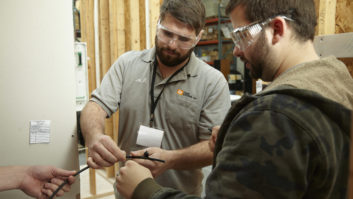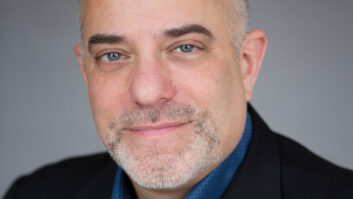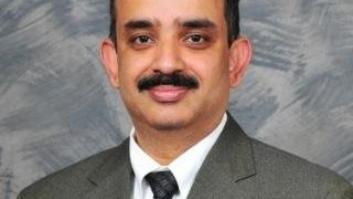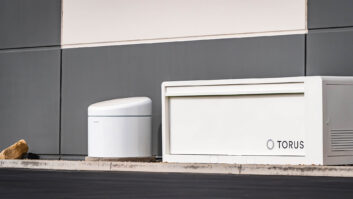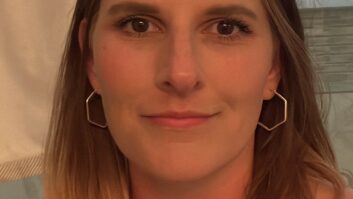CEA and CEDIA Focus on Technology for an Aging Population

A class communicates with a Selfhelp Virtual Senior Center participant.Like it or not, if we’re lucky we’ll all get older. The Consumers Electronics Association (CEA) and CEDIA have taken note. Both organizations aim to make the transition a little easier and much healthier through technology.
The recently launched CEA Foundation is on a mission to link seniors and people with disabilities to technology that can enhance their lives, said Foundation executive director, Stephen Ewell. “We’re looking at innovative ideas to make significant differences in these communities.”
Foundation leadership includes Audiovox founder John Shalam, who serves as chairman, Larry Richenstein, vice chairman, and Veronica O’Connell, secretary and treasurer. The first foundation grantee, Selfhelp Community Services’ Virtual Senior Center, enables homebound seniors to have an interactive experience that reduces social isolation, promotes wellness, and provides better access to community services. Selfhelp runs classes and activities and offers social videoconferences and educational programs. Its programs are accessed by a touchscreen computer device that connects to a virtual senior center.
CEA has set aside funding for the CEA Foundation, and is close to finalizing its commitments for 2012. “We are looking to contribute approximately $250,000 to $300,000 this year to Selfhelp and to other nonprofits,” Ewell said. “Our focus is on the philanthropic side, but there also will be opportunities for CEA member companies to raise awareness of accessibility features. Many of our members already are involved in philanthropic activity.”
The Foundation is working on its 2013 plans, and later this year will offer information about how organizations serving seniors and people with disabilities can apply for grants.
“We’re still in our initial year of offering grants and identifying partnerships, but as we build there will be more opportunities in the works,” Ewell explained. “One area we are researching is what other foundations exist in the consumer electronics industry and where we can work with them. It all ties into supporting and identifying accessibility features.’
The goal is to identify areas where the Foundation can help improve lives and be a conduit between the consumer electronics industry, advocacy groups, consumers, and others with an interest in this.
“This is a real opportunity for seniors and those who are disabled,” Ewell noted. “Consumer electronics can have a significant impact for those with visual, hearing, or mobility challenges, as well as those who may lack social interactivity. This is a gesture of goodwill and it shows that the industry is able, and wants to reach out.”
CEDIA Looks to the Future
To many, home healthcare looks like a knight in shining armor, said Dave Pedigo, senior technology director, CEDIA. “I believe, as do a lot of CEDIA members, that aging in place with technologyaided home healthcare is certainly coming. It is an opportunity for our members to make money while allowing people to age gracefully.”
To that end, CEDIA offers an array of education seminars and classes as a resource for members. The various classes are conducted at CEDIA headquarters or at locations around the country. These courses are offered at CEDIA EXPO in Indianapolis, in addition to webinar based courses.
“I have a real passion for using technology to help seniors stay in their homes as long as possible,” Pedigo stated. “We can now offer goods and services that improve the quality of life.”

Selfhelp Community Services’s Virtual Senior Center, which recently received a CEA Foundation grant, enables homebound seniors to have an interactive experience that reduces social isolation, promotes wellness, and provides better access to community services. Pictured is Milton Greidinger, one of Selfhelp’s Virtual Senior Center participants, talking from his home on his desktop computer with a class being held at Selfhelp’s Benjamin Rosenthal-Prince Street Senior Center in Flushing, Queens.Over the last few years, CEDIA has worked with GrandCare Systems, a sponsor of the CEDIA Future Technology Pavilion, to show the latest home health products and how they can become a core part of an ESC’s product offerings.
Applications include the storage of data about blood pressure, weight, and glucose levels and to transmit that data to a healthcare provider which provide the primary care provider a much better understanding of the patients overall health. For nonemergency appointments, telepresence could be the new form of doctors’ appointments.
“We’re on the precipice of the digital home health revolution,” Pedigo said. “What we’re seeing now are products that are designed for crisis management, such as a data that places an immediate call to a doctor if a step on a scale indicates a certain weight gain, for example. This is now the early adopter realm, and the learning curve is steep.”
Many details still need to be sorted out on the federal, state and local level, on matters such as standardization, liability, and privacy issues regarding home health. There also are questions about HIPAA (The Health Insurance Portability and Accountability Act) and if private insurance or Medicare will pay for some or all of the services. All of these issues should be sorted out over the next few years, but it certainly presents a barrier to entry for some.
Delving into this market segment requires a different business model, one that incorporates recurring monthly revenue (RMR) and higher volume, lower margin sales, Pedigo explained. “From an electronics perspective, there is a lot of carryover, but the terminology, billing and client/ ESC relationship are very different, which is why we are talking so much about this. We want CEDIA members to proactively research home health to see if it’s a business they want to get involved in, and if so, to be able to develop a business plan and trained workforce to help ensure success.”
From the humane perspective, it’s a lot nicer to sell goods and services that improve the client’s quality of life, Pedigo explained. “This technology is a potential solution to one of the biggest national problems—healthcare. Digital health care should be a big solution to increasing the quality of care for many while reducing the expenses for managed care.”
According to the 2010 U.S. Census, there are more than 100 million Americans over the age of 50. The census also shows that the fastest growing population by percentage is those 85 years of age or older, and the second fastest is those turning 90 or older.
The numbers don’t lie, Pedigo said. There is a convergence of people getting older, and it is highly disproportionate to the number of physicians entering the workforce.
“With home health, we can provide a setting where people can receive excellent long-term care while remaining in their own homes longer,” he explained. “This can also be a significant return on investment for clients who can put off sending a loved one to a managedcare facility for an extended period of time.”
If custom electronics technology is going to serve its purpose, it will require both systems designers and integrators take adequate time to understand their clients’ needs to ensure that the system works as expected.
Pedigo believes the big opportunity for the industry’s ROI is in recurring monthly revenues. If an ESC designs the system properly, they may have a revenue pipeline filled with longterm clients paying a monthly subscription fee.
“The industry reception has been one of guarded enthusiasm, guarded because of a lot of new technology have resulted in a loss for ESCs,” he said. “They need to make sure that this is the right opportunity for them by taking our classes to see if it fits their core business model. Larger companies may find it difficult to significantly alter their business model, but many larger companies also have more disposable income and can be better insulated against risk. It’s a double-edged sword, but I think that there are many companies [that] will ultimately jump into home health.”
CEDIA will have seminars and products for this market at its September EXPO. “Many companies may feel uneasy about charging for products related to their health and well being,” Pedigo said. “But this is an opportunity to make money doing something doing good. It’s an exciting time.”
Karen Mitchell is a freelance writer based in Boulder, CO.
